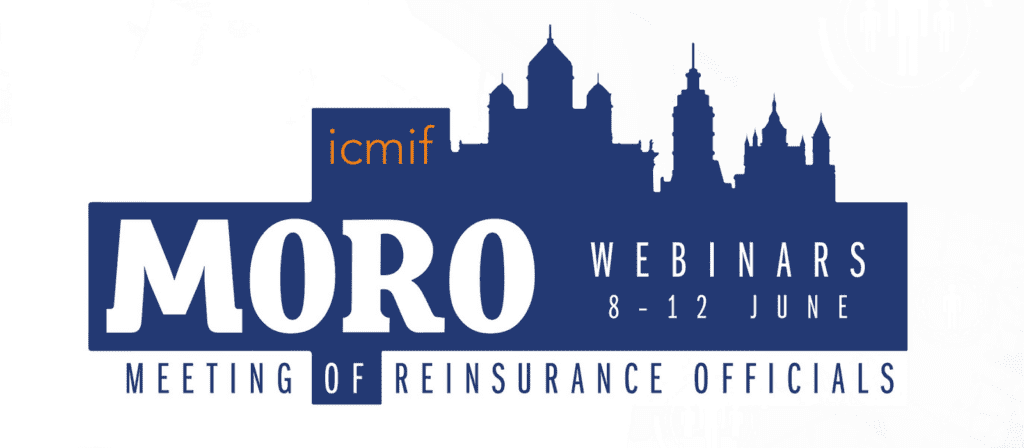Following rate improvements in many markets, and particularly in loss-affected segments, ICMIF Supporting Member Swiss Re says it expects further rate hardening across all lines of business. At the same time, the reliance on underwriting profits increases in the low interest rate environment. Swiss Re also expects more opportunities for (re)insurers due to a combination of improving insurance demand and growing exposures.
Swiss Re expects prices to continue to increase driven by the combination of lower interest rates and the need for prices to cover increasing loss trends as demonstrated by recent experience across the world.
Hurricanes are frequently affecting areas where exposures have grown as a result of wealth accumulation. This leads to increasingly severe losses, as demonstrated in the past few years. 2020 is forming up to be no better. The current Atlantic hurricane season is the first on record to see nine tropical storms forming before August and 13 before September. The situation is further aggravated by the higher frequency and severity of secondary perils, such as floods and wildfires, leading to rising claims and highlighting the need for insurance protection.
While low interest rates have been affecting the industry’s profitability since the global financial crisis, further rate cuts aimed at fighting the economic impact of COVID-19 will only exacerbate this problem. In “Low interest rates: the new norm and what it means for insurers“, the Swiss Re Institute concludes that, to achieve a reasonable return on equity through 2021, non-life insurers in G7 markets need to improve underwriting margins by as much as 7-12 percentage points to compensate for lower interest rates.
Swiss Re’s Chief Executive Officer Reinsurance Moses Ojeisekhoba (pictured) said: “Even before the COVID-19 crisis, most major markets were operating at below-average profitability. To be able to address the growing need for insurance protection in a sustainable way, further price increases across all lines of business are clearly needed.“
Overall, Swiss Re expects the non-life insurance market to continue to grow, driven primarily by exposure growth. Swiss Re Institute forecasts a global growth rate of 3.3% in real terms for 2021. Other factors driving demand are the awareness, triggered by COVID-19, of the danger of being uninsured and the increasing frequency of weather-related events.
Moses Ojeisekhoba said: “In these unprecedented times it’s more important than ever to support our clients with risk knowledge, capital strength and tailored solutions. In the end, it’s about tackling protection gaps together to make the world more resilient.”
COVID-19 ups pressure on world resilience as global insurance protection gap reaches new high
The COVID-19 pandemic is expected to reduce global macroeconomic resilience by about 20% in 2020 from 2019 levels as stimulus packages deplete countries’ fiscal and monetary buffers around the world. According to the latest annual Swiss Re Institute resilience indices, the UK, Japan and the US will experience the greatest falls in resilience among major economies. Switzerland, Finland and Canada remain the world’s three most resilient countries, reflecting their comprehensive economic strength against future crises.
Global economic resilience held up in 2019 compared with 2018, but the world entered the COVID-19 crisis with less shock-absorbing capacity than before the global financial crisis of 2008-09, the last major economic downturn. The Swiss Re Institute Macroeconomic Resilience Index (E-RI) for the world stood at 0.62 in 2019, against 0.61 in 2018.
“The fiscal and monetary stimulus response to COVID-19 was key to cushioning the economic impact of government-ordered lockdowns,” Jerome Jean Haegeli, Group Chief Economist at Swiss Re, said. “However, the reality of wartime-like spending is that it leaves much less room for future policy manoeuvre. What’s more, the key economic policy risk is that these temporary government measures are too challenging to unwind and become permanent, leaving economies dependent on ongoing stimulus. A focus on replenishing resilience by reinstating fiscal and monetary buffers, through structural reforms to improve long-term growth prospects, will be critical.”
Insurance resilience against three major risks – mortality, health spending and natural catastrophes – weakened in 2019, the indices show. The combined global protection gap for the three perils is calculated as reaching a new high of USD 1.24 trillion. Globally, mortality resilience declined the most, driven by a widening of the mortality protection gap in the Asia-Pacific region, where China’s protection gap expanded due to rapidly growing household debt. Health resilience was stable despite some deterioration in emerging markets. The global health protection gap widened by more than 5% to USD 588 billion. Natural catastrophe resilience was lowest of the three risk areas. Swiss Re Institute expects that health and mortality protection gaps will widen as households grapple with lower incomes, higher healthcare costs and the financial consequences of losing a breadwinner as a result of the pandemic.
“The widening global protection gap is a huge opportunity for insurers to fulfil their mandate as risk absorbers and improve societal resilience,” Haegeli said. “In times of crisis, households need risk protection. Insurance is a key tool to help households reduce their financial vulnerability in disruptive environments.”
Despite the cancellation of the Rendez-Vous de Septembre 2020 in Monte Carlo, Swiss Re continues to host its established media events, but in a virtual format. It held a virtual media conference to shares its view on the upcoming renewals season The presentation for the media conference is available for download from swissre.com.
ICMIF members wishing to obtain more information about Swiss Re’s Rendez-Vous de Septembre 2020 activities can access this here.






